Outside the wavy shoreline, the open Huangpu River stretches endlessly to the horizon, and the breeze is fresh and pleasant, with the reeds on the shore swaying happily... Strolling on the Shanghai South Bund waterfront trail, people will feel a rare slow-paced comfort amidst the fast-paced city.
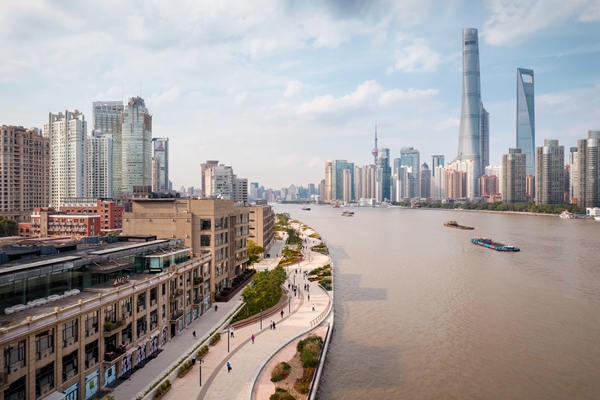
Shanghai South Bund waterfront.[Photo from Marcus Bredt]
From an almost abandoned ferry port, namely Dongjiadu Port, to the friendly waterfront leisure space, people may hardly be aware that such a favored urban public space was designed by a foreign architect: Magdalena Weiss. Having spent more than ten years in this city, she has a deep understanding of the living conditions of people here and the city character, which has inspired widely accepted architectural works.
Proud changes to the city skyline
Ms. Weiss, born in Bopfingen of Germany, has been interested in China since she was in school. The "Chinese History" course in school deeply attracted her and impressed her with China's profound history and culture.
After graduating from her master's degree study in architecture, Ms. Weiss has been working in this industry. In 1997, she joined the German firm gmp Architekten and worked at their Hamburg headquarters. In 2003, gmp decided to set up an office in Shanghai after winning the Shanghai Lingang New Area Planning International Design Competition. Ms. Weiss was asked to start the office in Shanghai with the design team.
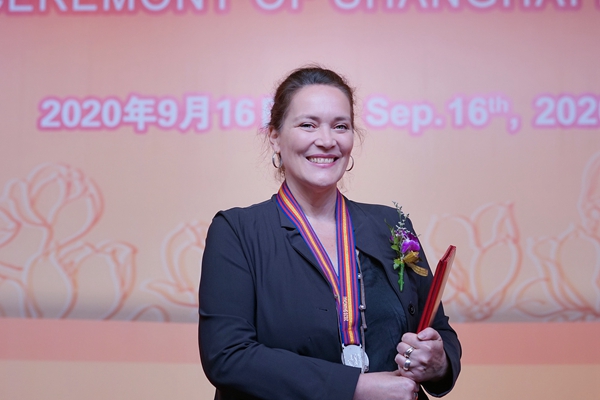
Ms. Weiss receives the 2020 Shanghai Magnolia Award.[Photo from gmp Architekten]
Over the past 16 years, Ms. Weiss has undertaken many design projects in Shanghai, including the Management and Service Center of the Lingang New Area, the COMAC headquarters building, the South Bund waterfront public space, and the Zhangjiang Science City. What she feels most proud of, however, is the Shanghai Oriental Sports Center, which she thinks has had a central role during her 16 years here and marks a big development in Shanghai.
She explained that the sports center was constructed around 2010 when the Shanghai World Expo was held. At that time, the city was being developed very much towards the river. All the old industries were moved out of the riverfront for the expo.“And this is one project which really supported this development,” said Weiss.
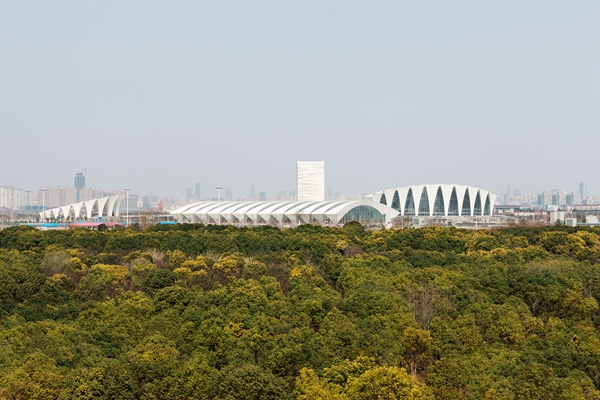
Shanghai Oriental Sports Center designed by Ms. Weiss.[Photo from Marcus Bredt]
As one of the key designers of the city skyline, Ms. Weiss has a profound and unique understanding of the city. She said that there is hardly any city in the world that has this contrast of old and new so close to each other by the Huangpu River.
The layout design of the entire city has experienced three generations of concepts. The South Bund waterfront space project is the embodiment of the second-generation planning concept which placed emphasis on reviving historical buildings and using the existing resources to develop a better ecological environment.
She emphasized that an extremely important aspect of gmp's design concept is to get identity into cities by not destroying the old but using the old things to build the cities’ own characters.
For the South Bund waterfront space project, at the beginning of the design period, the team considered connecting the old city to the space by opening several entrances.
"For us, the South Bund Riverfront space project is special. It is very close to the downtown. It is not a pure landscape design, but more like an urban city design."
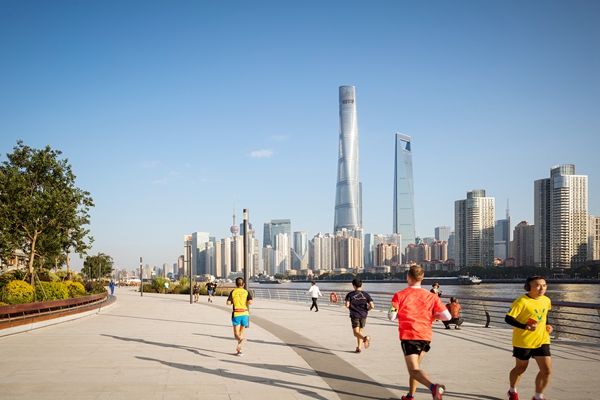
The South Bund Riverfront.[Photo from Marcus Bredt]
“I hope to maintain the local characteristics and maintain the connection with the old city. Although Shanghai has undergone earth-shaking changes, we still want to retain Shanghai’s own characteristics. We should retain more historical things and tear down less to combine the new with the old," said Ms. Weiss.
Looking back, Ms. Weiss felt that one of the biggest changes was the development of the city towards the river."This trend started almost 10 years ago when the Shanghai World Expo was held. Now the riverfront is getting so nice with industrial areas and new buildings. I think this is a very good quality for the citizens itself."
Loves outstanding work but lives low-key life
Besides all the big changes the city is experiencing, Ms. Weiss feels that her personal life is quite stable.“So I think that's also a bit of a character of this Shanghai area,” said Ms. Weiss.
“I have always lived in the city center in Puxi and have a quite stable surroundings, which is important to me personally. Shanghai is a city that you can have both a low-key life but do international work. They combine so closely in the city.” She explained,“Maybe in the office we work on very international positions with the best architects in the world coming together to give their design proposals. But after work, I take my bicycle and ride home in the small lanes with the trees. So that is a low-key life and there are very normal, ordinary people in the ordinary life. I like this closeness between life and outstanding events”, smiling from ear to ear. You could imagine how much love she has towards the ordinary life in Shanghai besides her busy work.
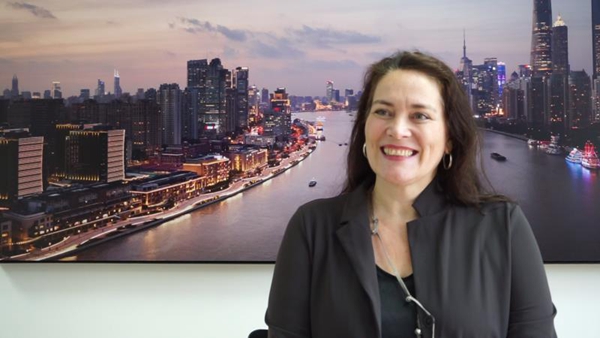
Ms. Weiss has an interview with Eastday.[Photo by Eastday]
Ms. Weiss stayed in Shanghai during most of the epidemic outbreak period. She learned about the news that China had reported the earliest cases in Germany where she was spending Chinese New Year and returned as soon as possible to Shanghai to resume her work.
Since she was in China when SARS broke out in 2002 and knows the ability of Chinese government in epidemic control, she was not that scared this time.
Due to the long-term budget of the architecture industry, no obvious effects have shown in this industry.“Since the competition in China for interesting building projects is very high, because there are also many very good Chinese offices as well, we are working hard to get more and more good projects. Basically, we are optimistic that things will recover and that we can go on in this way -- working in both Europe and China.”
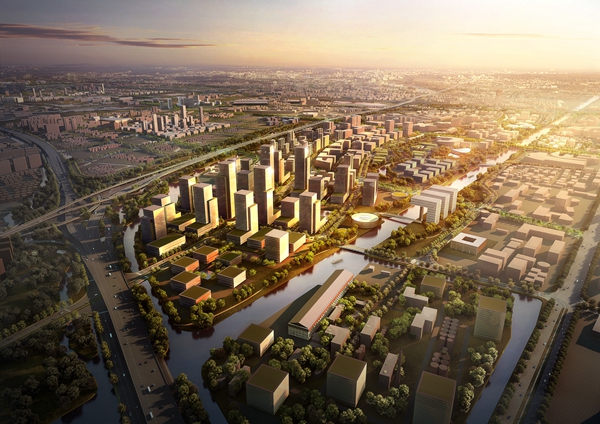
Zhangjiang Science City designed by Ms. Weiss.[Photo provided to Eastday]
In her view, Shanghai is maybe the most dynamic and prosperous city in China.“Shanghai is that open to foreign concepts and adapts to them very fast. This is a big motor for change. So we believe that Shanghai is really a very good future for our companies and for the world.”
She wrote down her message to Shanghai:“I'm grateful to have the chance to live and work in Shanghai. I hope to be a further part of this successful concept of openness and dialogue with the world.”
